

 the 1, 2 and 5 cents coins
the 1, 2 and 5 cents coins


 the 10, 20 and 50 cents coins
the 10, 20 and 50 cents coins

 the 1 Euro coin (both sides)
the 1 Euro coin (both sides)

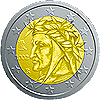 the 2 Euros coin (both sides)
the 2 Euros coin (both sides)
EURO. Symbol: ,
pronounciation: the "e" sounds like the "e" of "bed", then oo-ro;
accent on "e", θ-oo-ro. Euro is the new European currency,
with 8 new coins (1, 2, 5, 10, 20, and 50 cents, 1 and 2 ) and
7 new banknotes.
One of the two sides of the coins shares the same image with all countries
using Euro; the other side will be the "national" identity, with a
national symbol. Euro is in use since Jan 1st, 2002 also in Austria,
France, Portugal, Belgium, Germany, Luxemburg, Spain, Finland, Ireland,
Paix Bas, Greece. Not in UK. All euros (no matter the national symbols)
is valid and accepted in the countries which adhered to the agreement.
Here above you see the Italian euros.
Every coin has a different relief border, to be easily recognized
by the visually impaired.
The exchange rate Euro/European Union currencies has been decided
for each currency and is unchanged: 1 Euro is 1,936.27 liras. Liras
won't be used can be changed at all "Banca d'Italia" agencies before
March 1st, 2012.
Banknotes come in these
values:
5 , 10 , 20 , 50 , 100 , 200 , 500
with images referring to seven European architectural styles:
classic, romanic, gothic, rinascimental, baroque and rococς, architecture
of iron and steel, 20th century. With the 12 stars of European union.
See below both sides of each banknote.
Inserted in the banknote paper there are fluorescent particles,
a filigree, a safety thread. Some elements have been relief-printed,
for example on the border of 200 and 500 .

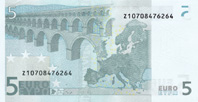


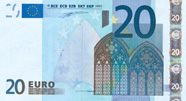
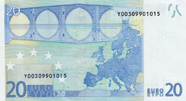
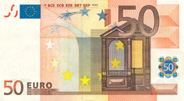
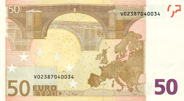
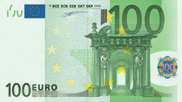
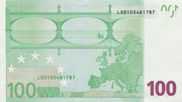
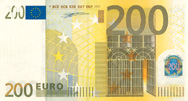
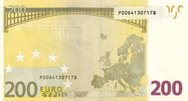
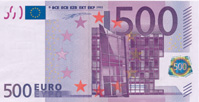
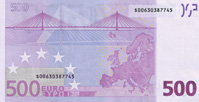


 the 1, 2 and 5 cents coins
the 1, 2 and 5 cents coins

 the 10, 20 and 50 cents coins
the 10, 20 and 50 cents coins

 the 1 Euro coin (both sides)
the 1 Euro coin (both sides)

 the 2 Euros coin (both sides)
the 2 Euros coin (both sides)


















